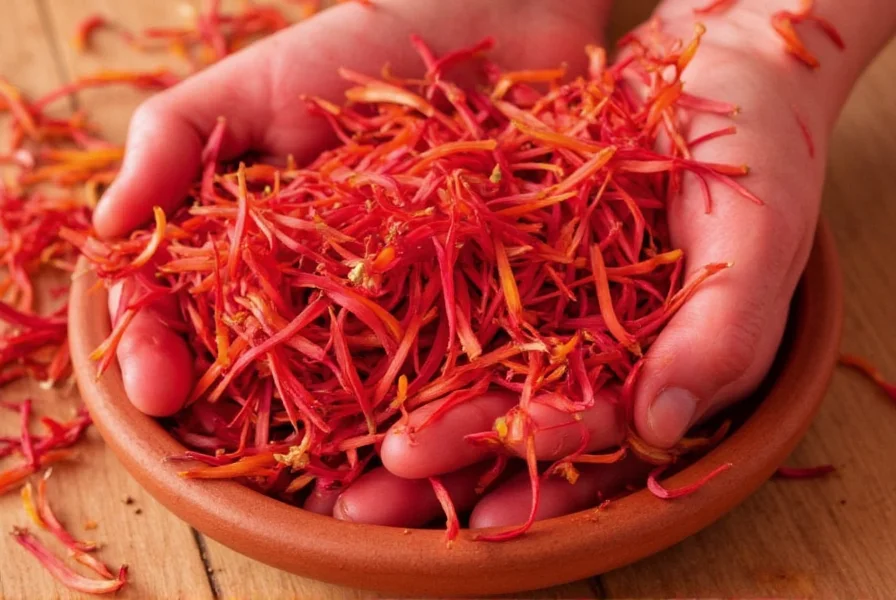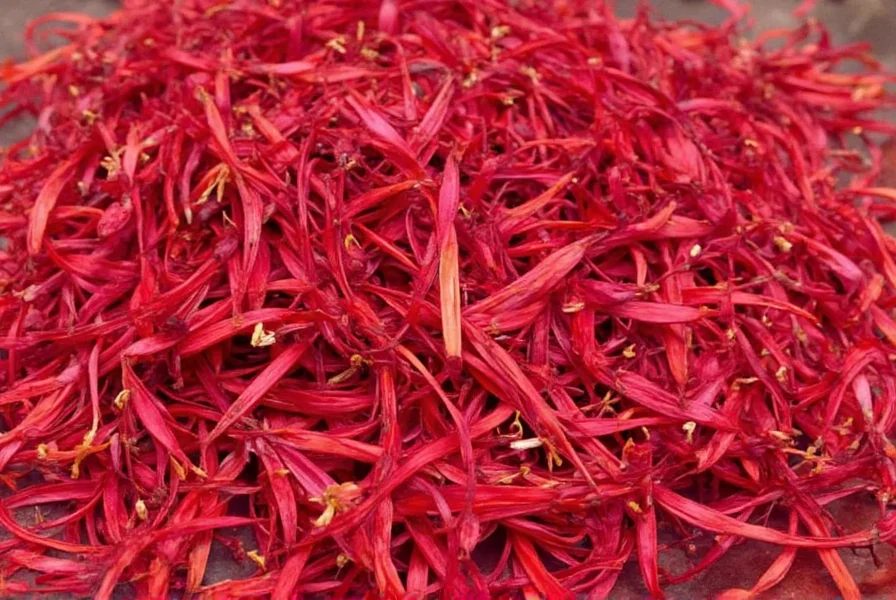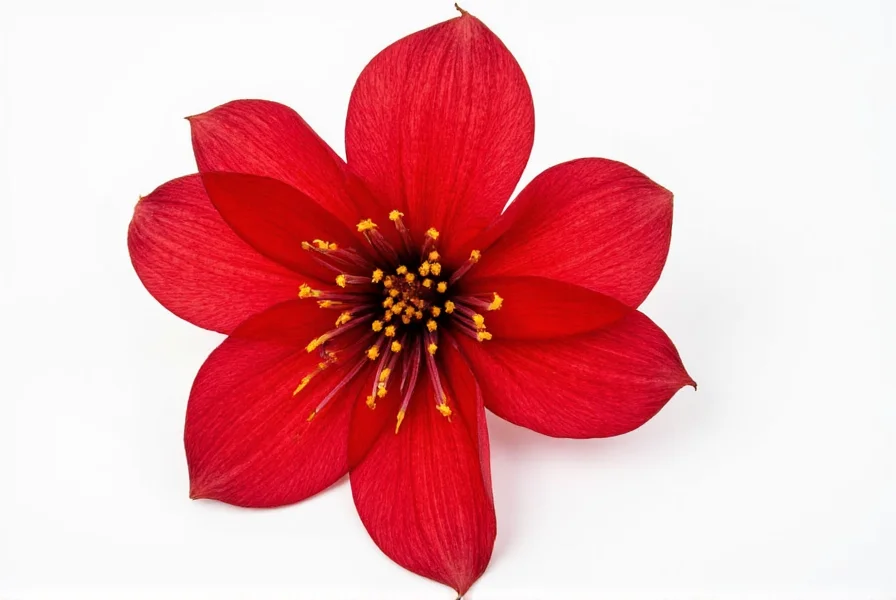The saffron flower, scientifically known as Crocus sativus, is a purple crocus whose delicate red stigmas produce the world's most expensive spice. Each flower yields only three stigmas, which must be hand-harvested at dawn during a brief autumn blooming season, explaining why it takes approximately 150,000 flowers to produce just one kilogram of dried saffron.
Saffron's extraordinary value stems from its labor-intensive harvesting process and unique chemical composition. The saffron crocus plant blooms for merely one to two weeks each year, with flowers opening at sunrise and wilting by noon. This narrow harvesting window requires thousands of workers to hand-pick blossoms before they close, then carefully extract the three crimson stigmas from each flower. Unlike machine-harvested crops, this meticulous process hasn't changed in thousands of years, preserving saffron's status as a precious commodity.
Botanical Characteristics of the Saffron Flower
The Crocus sativus belongs to the Iridaceae family and grows from corms rather than true bulbs. Each plant produces 5-10 purple flowers with distinctive characteristics:
| Feature | Description |
|---|---|
| Flower Color | Violet to lavender petals with dark purple veins |
| Stigmas | Three bright red threads that extend beyond the petals |
| Height | 10-15 cm (4-6 inches) tall when mature |
| Blooming Season | Autumn (October-November in Northern Hemisphere) |
| Harvest Time | Early morning, within 1-2 hours of opening |
Unlike many flowering plants, saffron crocus flowers are sterile and cannot reproduce sexually. Farmers propagate them through corm division, making large-scale cultivation challenging. The plant thrives in Mediterranean climates with hot, dry summers and wet springs, explaining why Iran produces over 90% of the world's saffron.

The Labor-Intensive Harvesting Process
Understanding how saffron is harvested from crocus flowers reveals why this spice commands such high prices. The process involves three precise steps:
- Picking: Workers harvest flowers at dawn when they're fully open but before heat causes wilting. Each picker collects approximately 150 flowers per hour.
- Separation: Within hours of picking, workers carefully remove the three red stigmas from each flower using fingernails or small tools.
- Drying: Stigmas are dried immediately using traditional methods (spreading on silk screens over charcoal) or modern techniques (food dehydrators at precise temperatures).
This entire process must occur within 12-24 hours of blooming. The saffron harvesting process requires approximately 40 hours of labor to produce just one ounce of dried saffron, compared to machine-harvested spices that yield pounds per hour.
Why Saffron Remains the World's Most Expensive Spice
Several factors contribute to why saffron is so expensive compared to other spices:
- Low yield per plant: Each flower produces only three stigmas weighing about 70mg when fresh
- Seasonal limitation: Harvest occurs during just 2-3 weeks annually
- Geographic constraints: Optimal growing regions are limited to specific climate zones
- Labor requirements: No mechanization exists for stigma extraction
- Quality degradation: Saffron loses potency if not processed immediately
When evaluating authentic saffron identification, look for deep red threads with flared ends, a sweet-honey aroma, and gradual color release in warm water (not instant). Counterfeit products often use safflower or marigold petals dyed with food coloring, which release color immediately and lack saffron's complex flavor profile.

Growing Saffron Flowers at Home
While commercial production requires significant space, growing saffron flowers at home is feasible for enthusiasts. Gardeners in suitable climates (USDA zones 6-9) can cultivate saffron crocus in containers or garden beds:
- Plant corms 4 inches deep in well-draining soil during summer
- Provide full sun and moderate watering during growing season
- Allow soil to dry between waterings during summer dormancy
- Expect blooms 6-8 weeks after planting in autumn
A single square meter of home-grown saffron crocus plants might yield 1-2 grams of dried saffron annually - enough for a few dishes but demonstrating why commercial production requires acres of land.
Traditional and Modern Applications
Beyond its culinary uses in dishes like Spanish paella and Persian rice, saffron has historical significance in textile dyeing, medicine, and religious ceremonies. Modern research explores its potential mood-enhancing properties, though culinary applications remain its primary use. When using saffron, remember that a little goes a long way - most recipes require just 10-20 threads for proper flavoring without bitterness.
Frequently Asked Questions
What part of the saffron flower becomes the spice?
The spice comes exclusively from the three red stigmas (female reproductive parts) of the Crocus sativus flower. These delicate threads are hand-picked from each blossom and dried to create saffron threads.
How can you tell real saffron from fake saffron?
Authentic saffron threads are deep red with orange tips, have a sweet floral aroma, and release color gradually in warm water over 15-20 minutes. Fake saffron often uses dyed corn silk or safflower that releases color immediately and lacks saffron's complex flavor profile.
Why does saffron flower bloom only in autumn?
The saffron crocus has evolved to bloom in autumn to avoid summer drought conditions. Its growth cycle begins with corms sprouting in late summer, flowering in autumn when temperatures cool and rains begin, then entering dormancy during winter and spring. This adaptation allows it to thrive in Mediterranean climates with hot, dry summers.
Can you grow saffron flowers indoors?
Yes, saffron crocus can be grown indoors in containers with proper conditions. Use well-draining potting mix, provide 6+ hours of direct sunlight or equivalent grow lights, and maintain temperatures between 60-70°F during growth. Water moderately during active growth but allow soil to dry between waterings during summer dormancy.
How long do saffron flowers stay open after blooming?
Saffron flowers typically remain open for just 12-24 hours after blooming. They open at dawn and begin wilting by midday, which is why harvesting must occur early in the morning. This brief window necessitates immediate processing of the stigmas to preserve quality.











 浙公网安备
33010002000092号
浙公网安备
33010002000092号 浙B2-20120091-4
浙B2-20120091-4